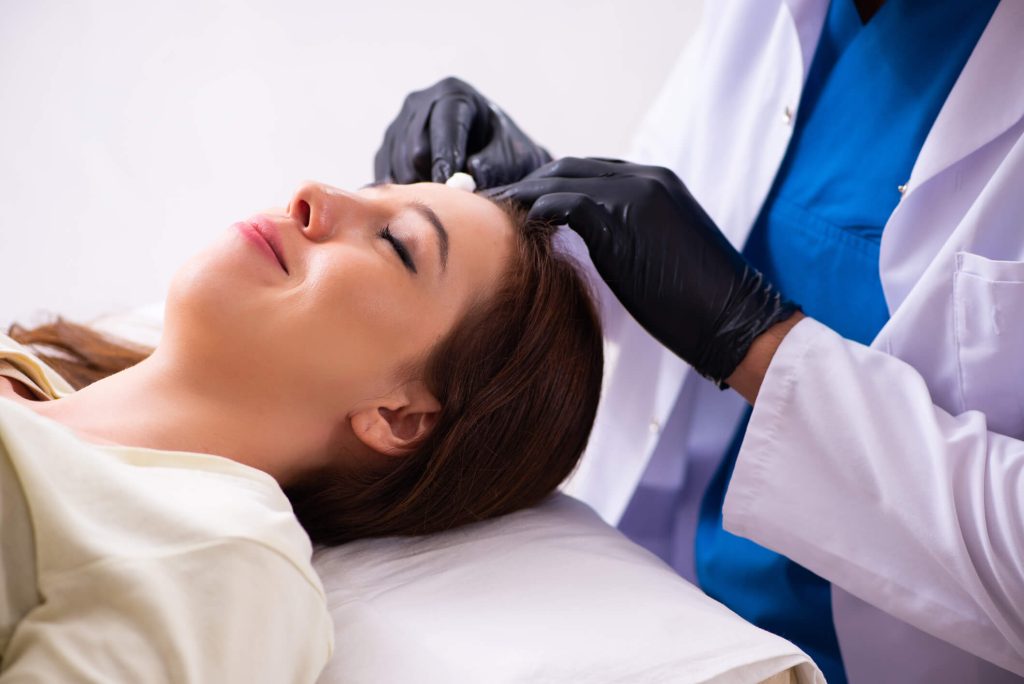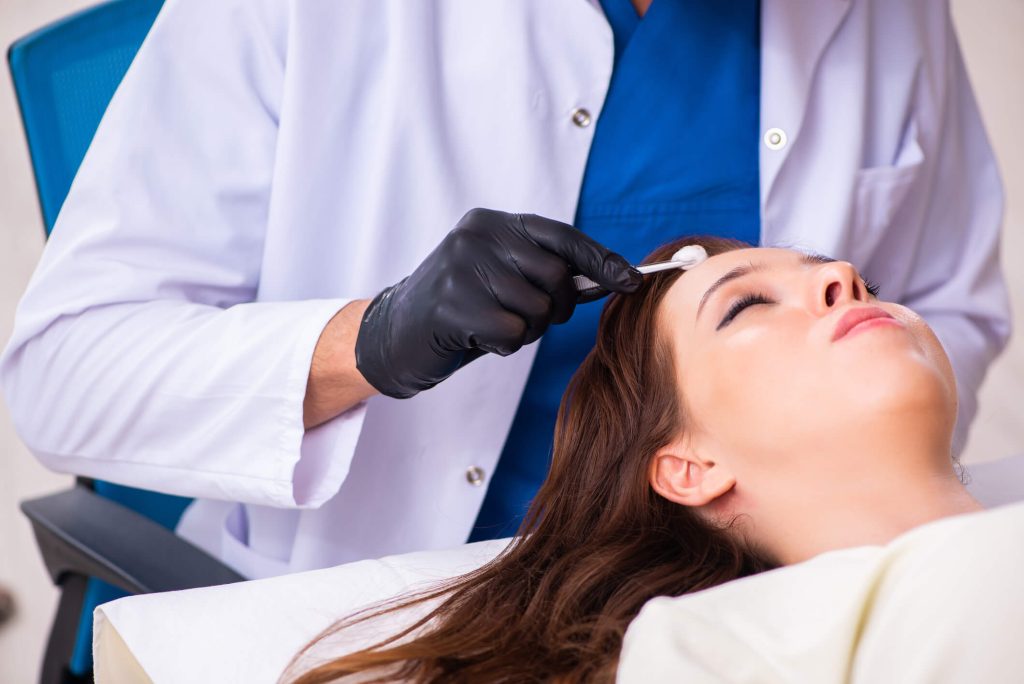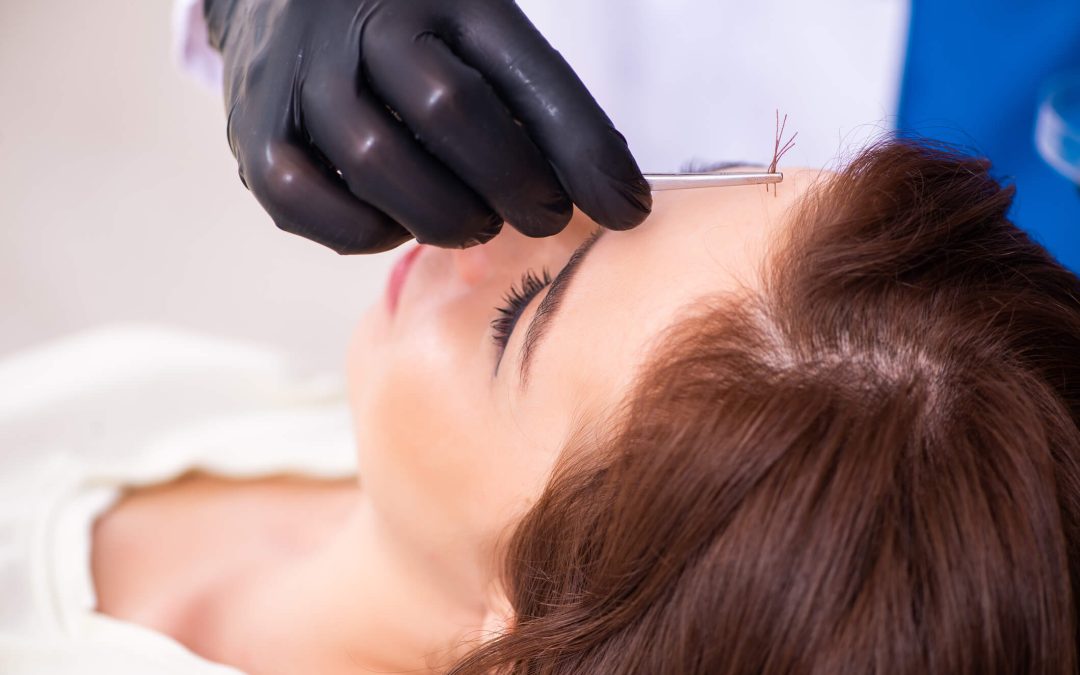Hair loss is a common concern for both men and women, but it often impacts women differently. While men frequently experience receding hairlines or male pattern baldness, women typically see diffuse thinning or hair loss concentrated at the crown and part line. This can be distressing, affecting self-confidence, daily activities, and overall appearance. Fortunately, modern hair restoration procedures, including NeoGraft hair transplants, offer safe, effective, and minimally invasive solutions specifically tailored for women.
Women considering hair transplantation often ask: “Can I restore my hair naturally?” The answer is yes. With proper evaluation, a tailored treatment plan, and the correct surgical technique, women can achieve fuller, natural-looking hair that enhances their appearance and boosts their confidence. In this article, we’ll explore female hair loss, the NeoGraft® procedure, candidacy, recovery, and long-term benefits.
Understanding Female Hair Loss
Female hair loss can result from a combination of genetic, hormonal, environmental, and medical factors. Common causes include:
- Androgenetic Alopecia (Female Pattern Baldness): The most common type of hair loss in a woman, often hereditary, characterized by gradual thinning along the crown and top of the scalp while maintaining the frontal hairline. This condition can affect the density and number of hairs available for transplantation.
- Alopecia Areata: An autoimmune condition that causes patchy hair loss in various areas of the scalp and sometimes the body, which may influence candidacy for hair transplant surgery.
- Telogen Effluvium: Often triggered by stress, childbirth, surgery, illness, or sudden weight loss, this condition causes diffuse hair shedding and may temporarily reduce the patient’s hair density.
- Traction Alopecia: Hair loss caused by repeated tension from hairstyles like braids, ponytails, or extensions, which can damage hair and the donor site, potentially leaving scars that need careful consideration during hair transplant surgery.
- Hormonal Changes: Pregnancy, menopause, polycystic ovary syndrome (PCOS), thyroid disorders, or other hormonal fluctuations can impact hair growth, density, and a woman’s suitability as a candidate for hair restoration procedures.
- Nutritional Deficiencies: Iron, zinc, and protein deficiencies, as well as anemia, can lead to thinning hair and impaired hair growth, affecting both the patient’s natural hair and potential transplant outcomes.
- Medical Conditions and Medications: Chronic illnesses, autoimmune diseases, chemotherapy, and certain medications can cause hair loss, which specialists must evaluate to determine if a woman is an appropriate candidate for hair transplant surgery.
Hair thinning in women can be gradual or sudden, and understanding the root cause is crucial for developing an effective treatment plan. Consulting with experienced specialists ensures an accurate diagnosis and a tailored approach for each patient, whether that involves hair transplant surgery, medical therapy, or a combination of both. The condition of the donor site and the presence of any scars must be carefully assessed to achieve optimal results and natural-looking hair growth.
NeoGraft® Hair Transplant: A Solution for Women
NeoGraft® is a leading hair restoration method that uses advanced hair transplantation techniques based on Follicular Unit Extraction (FUE) technology. This process involves harvesting individual hair follicles from a donor area—typically the back or sides of the scalp—and implanting them into areas of thinning or balding. Unlike the traditional strip method (FUT), NeoGraft® avoids a large linear scar, reduces discomfort, and enables faster recovery, preserving the natural texture of the skin and scalp.
Key features and benefits include:
- Precision and Natural Results: Follicles are carefully implanted at the correct angle, density, and orientation to achieve a natural look, replicating the way hair grows in millions of natural hair units.
- Minimized Scarring: Tiny circular incisions heal quickly and are nearly undetectable, allowing women to maintain short hairstyles and conceal any spots of previous thinning.
- Single or Multiple Sessions: Depending on the number of grafts needed and the extent of recession, the procedure can be completed in one session or staged over multiple sessions, with the skilled team coordinating each step of the process.
- Quicker Recovery: Most patients return to work and normal activities within a few days, with minimal post-procedure discomfort and minimal impact on the scalp skin.
NeoGraft® is effective for a wide range of hair loss patterns, including thinning hair at the crown, receding hairlines, or patches caused by genetics, alopecia areata, or trauma. Many women combine NeoGraft® with treatments such as PRP therapy, minoxidil, or hormonal therapy to optimize growth and maintain long-term results, providing a reliable way to restore millions of hairs for a fuller, natural appearance.
Identifying Ideal Candidates for Hair Transplantation

Neograft Hair Restoration Orange County in Orange County California helps women restore hair density and achieve a natural looking hairline.
Not all women are candidates for hair transplant procedures. Ideal candidates generally share the following characteristics:
- Sufficient Donor Hair: A healthy donor area, typically at the back or sides of the scalp, is required to provide follicles for transplantation.
- Stable Hair Loss Pattern: Candidates with progressive or patterned hair loss typically benefit most from transplants, whereas individuals with diffuse or unstable hair loss may require alternative treatments initially.
- Realistic Expectations: Patients should understand the potential results, including achievable density, placement, and growth timeline.
- Good General Health: Women with chronic illnesses, uncontrolled hormonal disorders, or poor wound healing may be advised to manage these conditions before undergoing surgery.
- Commitment to Aftercare: Successful outcomes depend on following post-procedure care instructions, including avoiding trauma, maintaining scalp hygiene, and monitoring growth.
Certain conditions may affect candidacy. For example, women with severe alopecia areata may experience new patches of hair loss that could compromise transplant results. Likewise, women with PCOS or thyroid disorders may need to stabilize hormone levels before surgery. A consultation with an experienced surgeon ensures a personalized evaluation and tailored plan.
The Hair Transplant Procedure: Step by Step
The hair transplant procedure for women involves several key steps:
- Consultation and Assessment: The surgeon examines hair density, scalp condition, and hair loss patterns, addressing concerns such as miniaturization of existing hairs. A detailed medical history, medications, and previous treatments are discussed. Goals and expectations are clarified to help patients make an informed choice about hair restoration, much like how people carefully consider elective procedures like breast augmentation.
- Donor Area Preparation: Local anesthesia is applied to ensure comfort. The donor area is carefully trimmed for precision harvesting of follicles, which is crucial for successful follicular unit transplantation and maintaining the natural appearance of the hair.
- Follicular Unit Extraction (FUE): Individual follicles are removed using NeoGraft® technology. This method preserves the integrity of the hair and reduces trauma to the surrounding tissue, thereby setting the stage for proper implantation.
- Recipient Site Preparation: Tiny incisions are made in the areas of thinning hair. The angle, direction, and density are carefully planned to match natural growth patterns and achieve a natural look.
- Follicle Implantation: Each follicle is carefully implanted into the prepared recipient site, ensuring optimal coverage and a natural-looking hairline. The technique addresses issues with miniaturized hairs and restores density where it is most needed.
- Immediate Post-Procedure Care: Patients may experience mild redness, swelling, or scabbing. Pain is generally minimal and managed with over-the-counter medication. Proper rest and adherence to post-procedure instructions are crucial for a successful recovery process, ultimately leading to long-term success.
The procedure typically lasts several hours, depending on the number of grafts. Most women undergo a single session for moderate hair loss, while extensive cases may require multiple sessions spaced several months apart. By following the proper steps and guidance from specialists, women can achieve natural-looking results that blend seamlessly with their existing hair, addressing concerns that might arise for themselves or others in their social or professional circles.
Recovery and Aftercare
Proper hair transplant aftercare is essential for successful hair growth, as it directly affects the form and shape of the transplanted hairs and the overall aesthetic look of the scalp. Recovery considerations include:
- Protecting the Scalp: Avoid direct sun exposure and refrain from wearing tight hairstyles that may stress the transplanted follicles. This ensures the treatment area heals properly and prevents burns or damage to the delicate skin.
- Gentle Hair Care: Wash your hair carefully, following the surgeon’s instructions, to prevent dislodging grafts and maintain the integrity of each follicle. Attention to detail during care is crucial to achieve natural results.
- Monitoring Growth: Transplanted hair may shed initially before regrowth begins. Complete results typically appear within 6 to 12 months, with adjustments sometimes made based on age, hormones, or the patient’s specific needs to optimize density and form.
- Activity Restrictions: Avoid strenuous exercise, swimming, or activities that increase sweat or scalp irritation for the first few weeks. These precautions help maintain the types of hair transplanted and prevent complications.
Most women report minimal discomfort and return to their regular routines quickly. The NeoGraft method’s minimally invasive nature contributes to faster recovery and lower complication risks compared to older techniques, such as FUT. Patients often consider this option in conjunction with other aesthetic treatments such as facelift or Botox, allowing them to achieve a harmonious look between their hair, face, and overall appearance.
Combining Hair Transplants with Other Treatments
To enhance outcomes, hair transplant patients often use adjunct treatments:
- PRP (Platelet-Rich Plasma) Therapy: Stimulates dormant follicles, promotes faster growth, and improves hair density.
- Minoxidil: Topical treatment that encourages hair regrowth and slows thinning.
- Medications for Hormonal Imbalances: Women with PCOS, thyroid disorders, or other hormone-related issues may benefit from medications to stabilize growth cycles.
- Lifestyle Adjustments: Reducing stress, improving nutrition, and managing deficiencies such as iron or protein can support transplant success.
These complementary treatments help ensure longevity and optimal density for transplanted hair.
Benefits of Hair Transplantation for Women

Neograft Hair Restoration Orange County offers women in Orange County California a safe and minimally invasive way to achieve fuller hair.
Hair transplants offer multiple physical and psychological benefits:
- Restored Hair Density and Coverage: Fills thinning areas, improves scalp appearance, and allows women to wear a variety of hairstyles.
- Minimized Scarring: FUE procedures result in tiny, nearly invisible scars.
- Natural-Looking Hairline: Proper follicle placement mimics natural hair growth patterns, creating a seamless appearance.
- Enhanced Confidence: Restored hair can improve self-esteem, social comfort, and overall quality of life.
- Long-Term Solution: Unlike temporary options like hair extensions or wigs, transplanted hair is a permanent and natural solution that grows over time.
Women report improved self-confidence and satisfaction following NeoGraft hair restoration, noting that even modest improvements in density and coverage can have a significant visual impact. This specialized approach ensures natural results, minimal discomfort, and a tailored experience for each patient, making it a preferred option for those seeking practical and long-lasting hair restoration.
Choosing a Qualified Surgeon
The skill and experience of the surgeon directly affect the outcome of a hair transplant. Key considerations include:
- Board Certification: Ensure the surgeon is certified in dermatology, plastic surgery, or hair restoration.
- Specialization in Female Hair Loss: Women require different approaches than men due to differences in hair patterns, scalp laxity, and density.
- Before-and-After Photos and Reviews: Examine previous cases to assess the surgeon’s ability to achieve natural, dense results.
- Personalized Consultation: A comprehensive evaluation and clear communication of goals, expectations, and potential risks.
A skilled surgeon minimizes complications such as scarring, poor growth, or unnatural hairline placement, ensuring a safe and comfortable experience.
Potential Risks and Considerations
While hair transplants are generally safe, risks may include:
- Infection: Rare but possible if post-procedure care is not followed.
- Bruising or Swelling: Typically mild and resolves within days.
- Temporary Shock Loss: Some existing hair may shed temporarily after surgery.
- Unsatisfactory Density: In cases with insufficient donor hair, achieving full coverage may be challenging.
- Complications from Medications or Anesthesia: These are uncommon but should be discussed during consultation.
Understanding these factors and adhering to aftercare protocols helps minimize complications and ensure optimal results.
Cost of Hair Transplants in Orange County
The cost of NeoGraft® or other hair transplant procedures varies based on:
- Number of Grafts: Larger treatment areas require more grafts, which increases the cost.
- Surgeon Expertise: Experienced surgeons with a history of successful outcomes may charge more.
- Location and Facility: High-quality clinics in Orange County, such as Neograft Hair Restoration Orange County, may have higher operating costs but provide specialized care and advanced technology.
- Additional Treatments: PRP therapy, medications, and follow-up visits may add to overall expenses.
Investing in a reputable clinic like Neograft Hair Restoration Orange County ensures safe, effective, and long-lasting results. Many clinics also offer financing options to make hair restoration procedures more accessible for patients seeking natural-looking, permanent solutions.
Long-Term Maintenance and Results
Hair transplants provide permanent restoration, but ongoing care ensures continued success:
- Scalp Health: Regular checkups to monitor growth and detect potential issues.
- Continued medical treatments, such as minoxidil, PRP, or hormone regulation, may enhance longevity.
- A healthy lifestyle, including adequate nutrition, stress management, and gentle hair care, helps protect transplanted follicles.
- Realistic Expectations: Understanding that full density may take 12 months to achieve and that minor touch-ups could be needed.
With proper care, women can enjoy restored hair density, natural coverage, and a boost in self-confidence for years to come.
Conclusion
Hair loss in women is a widespread issue with significant physical and emotional effects. However, advancements in hair restoration techniques, particularly NeoGraft® FUE hair transplants, make it possible to achieve natural, long-lasting results. Women who are suitable candidates with sufficient donor hair, stable hair loss, and realistic expectations can benefit from improved hair density, coverage, and appearance.
By combining hair transplantation with complementary treatments, selecting an experienced surgeon, and adhering to proper aftercare, women can reclaim not just their hair but also their confidence and sense of self. If you are experiencing thinning hair or hair loss, consulting with a specialist in Orange County is the first step toward achieving a fuller, healthier head of hair.
Investing in a hair restoration procedure is more than a cosmetic choice—it is a solution that enhances self-esteem, appearance, and overall quality of life.
Frequently Asked Questions
Can hair transplants be combined with other cosmetic procedures?
Many women combine hair restoration with treatments like facelifts or Botox to achieve a more harmonious overall appearance, though timing and recovery must be coordinated.
How long does a NeoGraft hair transplant last in women?
Transplanted hair is generally permanent; however, maintaining scalp health and following post-procedure care are essential for long-term success.
Will I need multiple sessions for complete coverage?
The number of sessions depends on the severity of hair loss, the availability of donor hair, and the desired density and style. Some women achieve full results in a single session, while others may require additional treatments.
Are there age limitations for women seeking hair transplants?
Hair transplantation can be performed on adult women of various ages; however, age-related hair thinning and hormonal changes can impact outcomes and expectations.
How soon can I return to physical activities after a hair transplant?
Most women can resume light activities after a few days, but strenuous exercise or swimming should be avoided during the recovery process to protect the treatment area.
Does hair texture or curl affect the procedure?
Hair type—straight, wavy, or curly—can influence implantation technique, follicle placement, and overall density, but skilled specialists can accommodate all hair textures.
Can hair transplants correct previous scarring or burns on the scalp?
In many cases, hair transplantation can help restore coverage in scarred or burned areas, although results may vary depending on the skin condition and the availability of donor hair.
What role do hormones play in female hair loss and restoration?
Hormonal fluctuations from menopause, PCOS, pregnancy, or thyroid disorders can contribute to hair thinning, and balancing hormones may improve transplant outcomes.
Is there a risk of shock loss after transplantation?
Temporary shedding of existing hairs, called shock loss, can occur, but it is usually temporary, and most hairs regrow naturally within a few months.
How should I choose a qualified surgeon for a hair transplant?
Look for board certification, experience with female hair loss, before-and-after photos, and positive patient reviews. A consultation will help determine candidacy, discuss options, and set realistic expectations.














Recent Comments